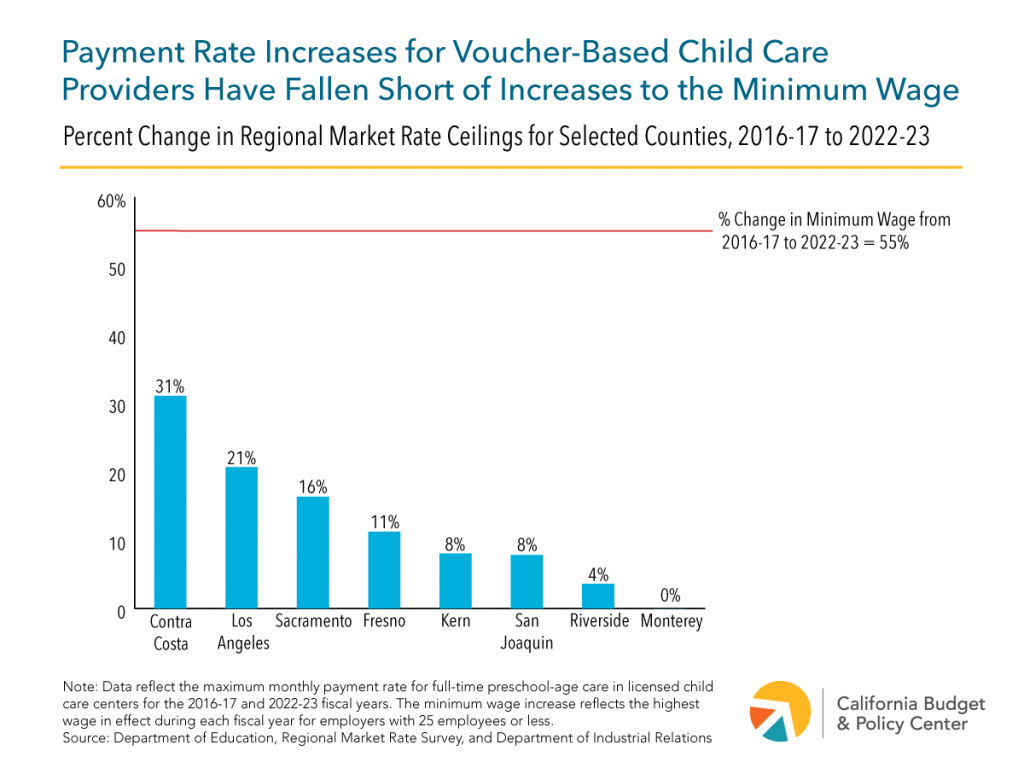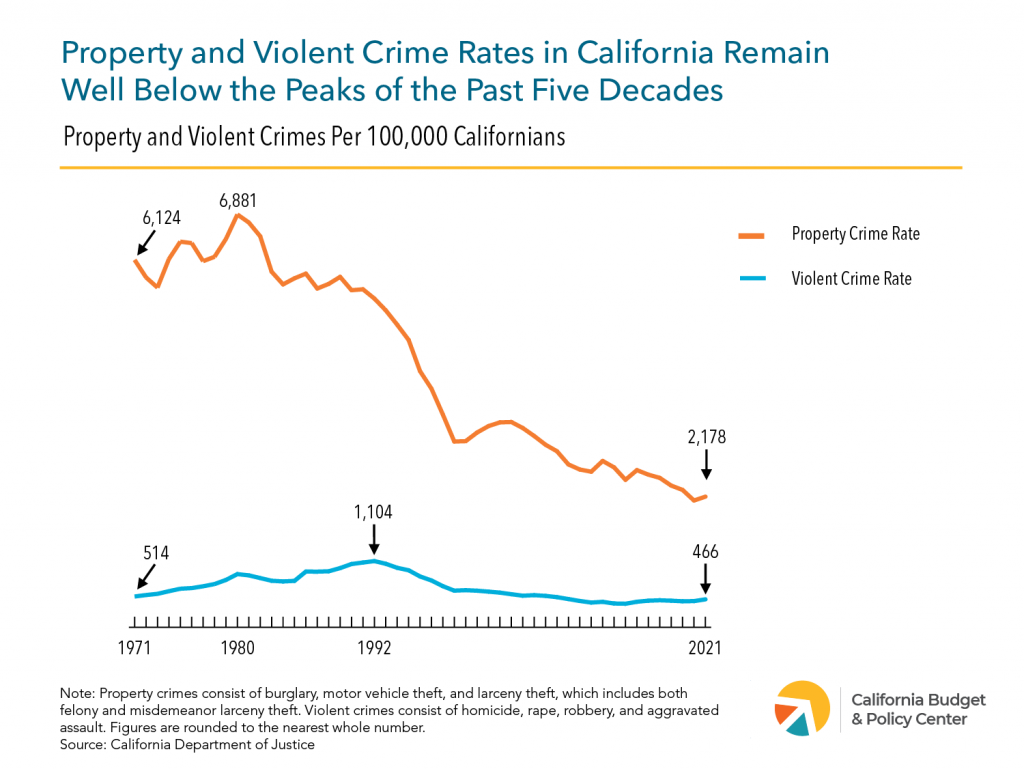California’s subsidized child care providers deserve fair and just wages for their essential work that helps children learn and grow. These early educators — who are primarily women and disproportionately women of color — offer affordable early care and learning options for working families struggling to make ends meet.
State leaders have not consistently and adequately increased provider payment rates. For example, since 2016-17 payment rates for voucher-based providers have not kept pace with the rising minimum wage, one of the major costs of providing care. Since 2016-17, the state’s minimum wage has increased by more than 50%.

Recent budget actions initiated a process for long-term rate reform. However, providers and the families they serve cannot wait for fair compensation. Policymakers should significantly increase rates in 2023-24 to ensure child care providers can keep up with costs, keep their doors open, and continue to offer invaluable care to children and families.









